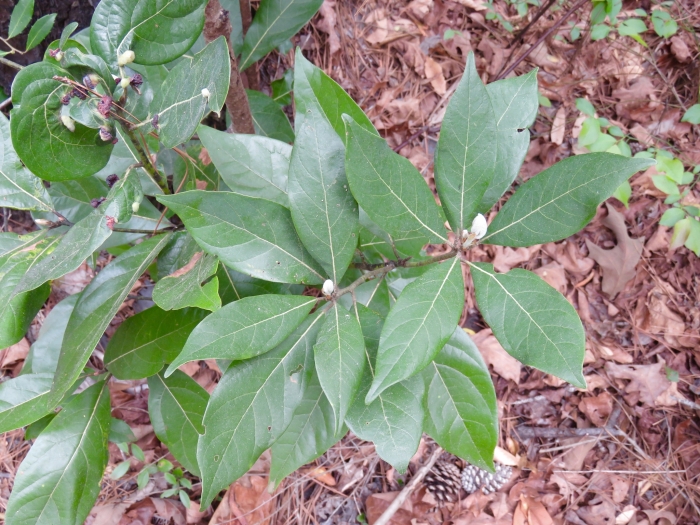Redbay
(Persea borbonia)
Redbay (Persea borbonia)
/
/

Laura Clark
CC BY 4.0
Image By:
Laura Clark
Recorded By:
Copyright:
CC BY 4.0
Copyright Notice:
Photo by: Laura Clark | License Type: CC BY 4.0 | License URL: http://creativecommons.org/licenses/by/4.0/ | Rights Holder: Laura Clark | Publisher: iNaturalist | Date Created: 2016-03-23T10:38:51-07:00 |

















































Estimated Native Range
Summary
Persea borbonia, commonly known as Redbay, is an evergreen tree or large shrub native to coastal forests, swamps, and maritime hammocks in the Southeastern United States. It typically grows to a height of 30-40 feet and a similar width, with a dense, rounded canopy. The leaves of Redbay are lanceolate, measuring 3 to 6 inches long, with a glossy, dark green upper surface and a paler underside. They are arranged alternately along the branches and release a spicy fragrance when crushed. In spring, small, inconspicuous yellow-green flowers bloom, followed by the production of fruit in the form of small, blue or black drupes that are attractive to wildlife.
Redbay is valued for its evergreen foliage, which provides year-round interest, and its adaptability to a range of landscape uses, including as a specimen tree, in naturalized areas, or as a buffer in coastal landscapes. It is also a host plant for the larvae of the Palamedes swallowtail butterfly, adding ecological value. Redbay prefers partial shade but can tolerate full sun, and it thrives in well-drained soils, though it can adapt to both dry and moist conditions. While it is generally low-maintenance, it is susceptible to the redbay ambrosia beetle, which spreads the deadly laurel wilt disease. To mitigate this risk, avoid moving firewood from infected areas and monitor for signs of wilt or beetle activity.CC BY-SA 4.0
Redbay is valued for its evergreen foliage, which provides year-round interest, and its adaptability to a range of landscape uses, including as a specimen tree, in naturalized areas, or as a buffer in coastal landscapes. It is also a host plant for the larvae of the Palamedes swallowtail butterfly, adding ecological value. Redbay prefers partial shade but can tolerate full sun, and it thrives in well-drained soils, though it can adapt to both dry and moist conditions. While it is generally low-maintenance, it is susceptible to the redbay ambrosia beetle, which spreads the deadly laurel wilt disease. To mitigate this risk, avoid moving firewood from infected areas and monitor for signs of wilt or beetle activity.CC BY-SA 4.0
Plant Description
- Plant Type: Tree, Shrub
- Height: 30-40 feet
- Width: 30-40 feet
- Growth Rate: Moderate
- Flower Color: N/A
- Flowering Season: Spring
- Leaf Retention: Evergreen
Growth Requirements
- Sun: Part Shade
- Water: Medium, Low
- Drainage: Medium, Fast
Common Uses
Bee Garden, Bird Garden, Butterfly Garden, Deer Resistant, Edible*Disclaimer: Easyscape's listed plant edibility is for informational use. Always verify the safety and proper identification of any plant before consumption., Fragrant, Low Maintenance, Salt Tolerant
Natural Habitat
Coastal forests, swamps, and maritime hammocks
Other Names
Common Names: Tisswood, Scrubbay, Shorebay, Swampbay, Red Bay
Scientific Names: , Persea borbonia, Persea borbonia var. borbonia, Persea carolinensis, Laurus borbonia, Persea littoralis, Laurus carolinensis, Laurus foetens, Tamala borbonia, Borbonia borbonia
GBIF Accepted Name: Persea borbonia (L.) Spreng.